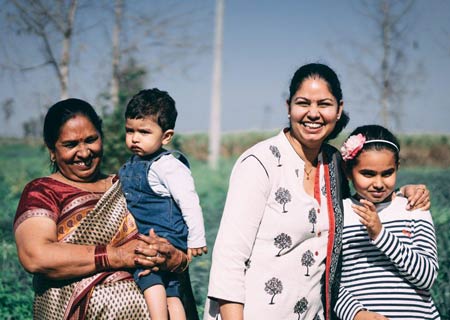In the dynamic world of Culturally and Linguistically Diverse (CALD) resource development, crafting visuals that resonate with diverse communities is a powerful tool. Discover the impact of using culturally-appropriate imagery as we explore how it harmonizes with the expertise of translation services in Australia.
It is crucial to create resources that meet the requirements of communities that are culturally and linguistically diverse (CALD) in today’s diversified, multicultural society. The production of CALD development entails producing written and visual content that is inclusive, respectful, and pertinent to people from many cultural backgrounds. The use of culturally appropriate imagery is an important component in CALD development. This article examines the value of employing culturally relevant imagery in the creation of CALD resources and offers suggestions for selecting and utilising such imagery.
What is CALD Development?
CALD development refers to the process of creating materials, such as brochures, posters, and online content, that are tailored to meet the needs of individuals from diverse cultural and linguistic backgrounds. These resources aim to bridge the communication and information gaps that may exist due to language barriers and cultural differences.
Importance of Cultural Sensitivity
Cultural sensitivity is crucial in CALD development to ensure that the imagery used respects and accurately represents the diverse cultures within the target communities. It helps foster inclusivity, understanding, and engagement with the intended audience.
The Significance of Culturally-Appropriate Imagery
1. Enhancing Communication and Connection
Culturally-appropriate imagery helps individuals from CALD backgrounds connect with the information and messages conveyed in the resources. When visuals align with their cultural experiences, values, and traditions, it facilitates a deeper understanding and engagement with the content.
2. Promoting Inclusivity and Representation
By incorporating diverse imagery, CALD resource development ensures that individuals from various cultural backgrounds feel represented and included. It promotes a sense of belonging and acknowledges the diversity within the community.
Strategies for Selecting Culturally-Appropriate Imagery:
-
Researching Cultural Symbols and Icons
To ensure the use of culturally-appropriate imagery, it is essential to conduct thorough research on the cultural symbols, icons, and visual representations associated with the target communities. This helps in selecting visuals that resonate with the cultural backgrounds of the audience.
-
Consulting with CALD Community Member
Engaging with CALD community members during the resource development process can provide valuable insights and feedback. Their input can help ensure the authenticity and appropriateness of the chosen imagery.
-
Collaborating with Cultural Experts
Working with cultural experts, such as community leaders, cultural advisors, or artists, can provide valuable guidance and expertise in selecting culturally-appropriate imagery. They can help interpret cultural nuances and offer suggestions for visuals that accurately reflect the target communities.
Ethical Considerations in CALD Development
-
Avoiding Stereotypes and Misrepresentation
Cultural sensitivity entails avoiding stereotypes, caricatures, and misrepresentation in CALD resource imagery. It is important to present diverse individuals and communities in a respectful and accurate manner, avoiding generalizations or perpetuating harmful stereotypes.
-
Seeking Permission and Consent
When using images of individuals from CALD communities, it is essential to seek their permission and obtain informed consent. Respecting the privacy and dignity of individuals is crucial in CALD resource development.
3 Ways You Can Use Images More Effectively When Communicating with Australian CALD Communities:
- When chosen well and appropriately for the piece, images can help your audience relate to the message you are trying to convey.
One way to do this is to use pictures of people that look like your audience rather than stock photos that stand out as having been downloaded off the internet.
This means that, if you will are planning to translate your resource into 10 community languages, it is preferable to use culturally-specific imagery for each of the languages of your project.
For example, the images in the Sinhalese translation will be different from those in the Spanish translation or the Chinese translation.
2. Images can support a concept or illustrate an idea so that the text is easier to understand.
The adage that a picture tells a thousand words is still relevant and correct in the modern world.
3. Images can help the reader navigate through the resource.
Your graphic can break up areas of dense text, making it more readable and accessible. This is crucially important for readers with disabilities or who have difficulty reading.
4. Try to be consistent with the type of images that you use.
We recommend not mixing icons, drawings, cartoons or pictures within the same resource. Stick to one type, or even two but don’t diversify too much.
- Use culturally appropriate imagery.
Images that are culturally relevant and appropriate to the target audience can help to create a sense of familiarity and trust. Consider using images that reflect the cultural values, beliefs, and norms of the community you are targeting.
- Avoid stereotypes and cultural appropriation.
Be mindful of using images that may perpetuate stereotypes or cultural appropriation. This can be especially important when working with culturally diverse communities, as it can create mistrust and offence.
- Consider the use of symbols and icons.
Symbols and icons can be a powerful way to communicate information to people who have low literacy levels or who speak different languages. Consider using universal symbols or creating symbols that are culturally appropriate and easy to understand.
- Ensure images are accessible.
Make sure that your images are accessible to all users, including those with visual impairments or other disabilities. This can be achieved by providing alternative text descriptions or captions for each image.
- Consider the layout and design of your resource.
The layout and design of your resource can impact how effective your images are in conveying your message. Consider using a clear and simple layout that allows your images to stand out and be easily understood.
- Use images to create an emotional connection.
Images can be a powerful tool for creating an emotional connection with your audience. Consider using images that evoke positive emotions and align with your project’s goals.
- Use high-quality images.
Using high-quality images can help enhance your resource’s overall quality and professionalism to enhance the overall quality and professionalism of your resource. Consider using images that are high-resolution, well-lit, and visually appealing.
- Keep copyright laws in mind.
When using images in your resource, it is important to respect copyright laws. Ensure you have the necessary permissions to use any images that are not your own or not in the public domain.
By keeping these considerations in mind when using images in your content for Australian CALD communities, you can create resources that are engaging, effective, and culturally appropriate.
Next time you are working on a piece that will need translation, keep these points in mind and, if in doubt, ask us!
Related Posts

Get a quote today
"*" indicates required fields
Subscribe today to receive the latest insights and updates from Sylaba Translations










